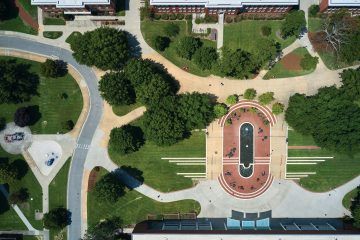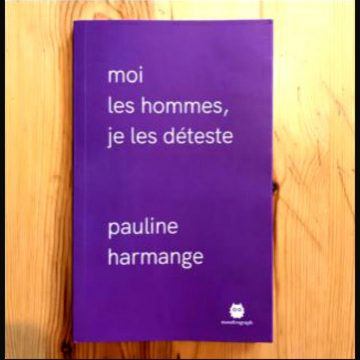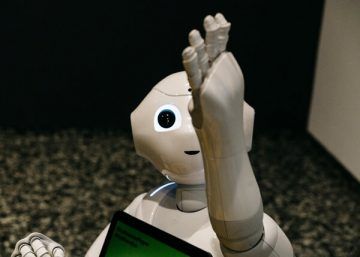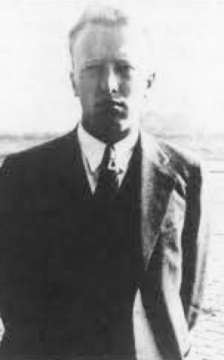Category: Recommended Reading
Outside the Man Box
Tracy O’Neill in The Baffler:
 Though domestic violence constitutes one of the direst public health and criminal justice crises in the country, its gravity has been a belated and recent revelation in the American psyche, one many would still consider provisional. Around one in four American women will be harmed by a partner over the course of their lives, and while violent crime has declined in recent years, homicides due to domestic violence have not. Over half of the women killed in this country are killed by a loved one. Covid-19’s stay-at-home orders have left those suffering domestic violence more cut off from resources to protect them from abuse, including formal services like health care and shelters, as well as sites of informal social control like public playgrounds and churches, which have been shown to regulate the occurrence of abuse.
Though domestic violence constitutes one of the direst public health and criminal justice crises in the country, its gravity has been a belated and recent revelation in the American psyche, one many would still consider provisional. Around one in four American women will be harmed by a partner over the course of their lives, and while violent crime has declined in recent years, homicides due to domestic violence have not. Over half of the women killed in this country are killed by a loved one. Covid-19’s stay-at-home orders have left those suffering domestic violence more cut off from resources to protect them from abuse, including formal services like health care and shelters, as well as sites of informal social control like public playgrounds and churches, which have been shown to regulate the occurrence of abuse.
While “wife beating” has been illegal in every state since 1920, it was, until the 1970s, a crime often treated as a marginal misfortune. Its prohibition went largely unenforced by police and prosecutors. Psychologists tended to label survivors narcissistic, labile, and irresponsible. It took two to tango, the prevailing attitude held, and authorities were generally unwilling to step in to end the dance.
The battered women’s movement, as it was then known, emerged in the 1970s to advocate for the interests of those harmed. The first shelter in the United States opened in St. Paul, Minnesota, in 1974. Six years later, Ellen Pence, a feminist activist who would go on to earn her doctorate in sociology, co-founded the Domestic Abusive Intervention Project (DAIP). At once learned and funny, Pence bantered with judges, told irreverent jokes, and her warmth served her ambitious vision of building a “coordinated community response” to abuse, encompassing measures such as systematic arrest of offenders, court action, probation, resources for victim support, and auxiliary social services.
More here.
Sunday Poem
Hay for Horses
He had driven half the night
From far down San Joaquin
Through Mariposa, up the
Dangerous Mountain roads,
And pulled in at eight a.m.
With his big truckload of hay
behind the barn.
With winch and ropes and hooks
We stacked the bales up clean
To splintery redwood rafters
High in the dark, flecks of alfalfa
Whirling through shingle-cracks of light,
Itch of haydust in the
sweaty shirt and shoes.
At lunchtime under Black oak
Out in the hot corral,
—The old mare nosing lunchpails,
Grasshoppers crackling in the weeds—
“I’m sixty-eight” he said,
“I first bucked hay when I was seventeen.
I thought, that day I started,
I sure would hate to do this all my life.
And dammit, that’s just what
I’ve gone and done.”
by Gary Snyder
Welcome to the Next Level of Bullshit
Raphael Milliere in Nautilus:
 One of the most salient features of our culture is that there is so much bullshit.” These are the opening words of the short book On Bullshit, written by the philosopher Harry Frankfurt. Fifteen years after the publication of this surprise bestseller, the rapid progress of research on artificial intelligence is forcing us to reconsider our conception of bullshit as a hallmark of human speech, with troubling implications. What do philosophical reflections on bullshit have to do with algorithms? As it turns out, quite a lot.
One of the most salient features of our culture is that there is so much bullshit.” These are the opening words of the short book On Bullshit, written by the philosopher Harry Frankfurt. Fifteen years after the publication of this surprise bestseller, the rapid progress of research on artificial intelligence is forcing us to reconsider our conception of bullshit as a hallmark of human speech, with troubling implications. What do philosophical reflections on bullshit have to do with algorithms? As it turns out, quite a lot.
In May this year the company OpenAI, co-founded by Elon Musk in 2015, introduced a new language model called GPT-3 (for “Generative Pre-trained Transformer 3”). It took the tech world by storm. On the surface, GPT-3 is like a supercharged version of the autocomplete feature on your smartphone; it can generate coherent text based on an initial input. But GPT-3’s text-generating abilities go far beyond anything your phone is capable of. It can disambiguate pronouns, translate, infer, analogize, and even perform some forms of common-sense reasoning and arithmetic. It can generate fake news articles that humans can barely detect above chance. Given a definition, it can use a made-up word in a sentence. It can rewrite a paragraph in the style of a famous author. Yes, it can write creative fiction. Or generate code for a program based on a description of its function. It can even answer queries about general knowledge. The list goes on.
GPT-3 is a marvel of engineering due to its breathtaking scale. It contains 175 billion parameters (the weights in the connections between the “neurons” or units of the network) distributed over 96 layers. It produces embeddings in a vector space with 12,288 dimensions. And it was trained on hundreds of billions of words representing a significant subset of the Internet—including the entirety of English Wikipedia, countless books, and a dizzying number of web pages. Training the final model alone is estimated to have cost around $5 million. By all accounts, GPT-3 is a behemoth. Scaling up the size of its network and training data, without fundamental improvements to the years-old architecture, was sufficient to bootstrap the model into unexpectedly remarkable performance on a range of complex tasks, out of the box. Indeed GPT-3 is capable of “few-shot,” and even, in some cases, “zero-shot,” learning, or learning to perform a new task without being given any example of what success looks like.
More here.
Saturday, September 12, 2020
When Monuments Fall

Kenan Malik in the NYRB:
“We stand today at the national center to perform something like a national act—an act which is to go into history.”
So said the great nineteenth-century former slave and staunch abolitionist Frederick Douglass at the unveiling of the Emancipation Memorial in Lincoln Park, Washington, D.C., in 1876. “That we are here in peace today,” Douglass told a crowd of almost 25,000, many of them African-American, “is a compliment and a credit to American civilization, and a prophecy of still greater national enlightenment and progress in the future.”
The idea for the memorial had come originally from former slave Charlotte Scott, of Virginia, who wanted a monument in honor of Abraham Lincoln. She gave five dollars to begin a funding drive, and the monument was eventually paid for entirely by former slaves.
Almost a hundred and fifty years later, many African Americans feel differently about the memorial. In June, Black Lives Matter protesters attempted, unsuccessfully, to topple the statue. D.C. Congresswoman Eleanor Holmes Norton vowed to introduce legislation to have the memorial removed. The Boston Art Commission unanimously resolved to take down a copy of the statue in Boston.
Some critics of the statue view Lincoln as a false friend of African Americans. Others see the statue itself as demeaning, with Lincoln represented as standing upright, while the free black man is on his knees. For defenders of the statue, on the other hand, to remove it is to erase a memorial paid for by former slaves and anointed by Douglass. It is to besmirch black history itself.
What is striking in this contemporary debate is that there is nothing new about it.
More here.
The appallingly bad neoclassical economics of climate change

Steve Keen in Globalizations:
ABSTRACT: Forecasts by economists of the economic damage from climate change have been notably sanguine, compared to warnings by scientists about damage to the biosphere. This is because economists made their own predictions of damages, using three spurious methods: assuming that about 90% of GDP will be unaffected by climate change, because it happens indoors; using the relationship between temperature and GDP today as a proxy for the impact of global warming over time; and using surveys that diluted extreme warnings from scientists with optimistic expectations from economists. Nordhaus has misrepresented the scientific literature to justify the using a smooth function to describe the damage to GDP from climate change. Correcting for these errors makes it feasible that the economic damages from climate change are at least an order of magnitude worse than forecast by economists, and may be so great as to threaten the survival of human civilization.
More here.
Could the US and Chinese economies really ‘decouple’?
 Isabella Weber in The Guardian:
Isabella Weber in The Guardian:
Talk of a new cold war is everywhere. Yet the economic context of the confrontation between the US and China is fundamentally different from the days of the iron curtain. The US and the Soviet Union had created competing globalisations, dividing the world into separate economic blocs. The two sides of the present divide are tied together as one “Chimerica” – with China as the global “workshop” and the US as the tech “headquarters” of the world. The old hope that this economic interdependence would prevent political conflict has been shattered. Instead, deep economic integration has increased the stakes: the core of the world economy could fall apart.
Today’s global economic order is still inscribed on the back of every iPhone: designed in California, assembled in China. Both parties in the race for the US presidency pledge to put an end to this arrangement. The promise, this time on both sides, is to bring manufacturing home. President Trump’s campaign proclaims that it will “end our reliance on China”. Joe Biden for his part is trying to out-hawk Trump and promises a future of “Made in America”.
Meanwhile, Xi Jinping proclaims “dual circulation” as China’s new economic strategy, which promises more focus on the domestic sphere rather than reliance on the rest of the world. It is true that one part of this dual approach is to signal that China’s door remains open. Xi has personally written to the CEOs of foreign firms assuring them of a favourable business environment. The Chinese government has announced plans to transform Hainan island into a gigantic free trade port and China has opened its financial and insurance markets at a pace that international fund managers had not dared to hope for. On the other hand, China is preparing for a falling-out with the US, emphasising the goal of self-reliance in critical sectors such as food and technology.
More here.
Ellen DeGeneres and the American Psychopath
 Jacob Bacharach in TruthDig:
Jacob Bacharach in TruthDig:
…Americans are too nice. That may seem like a paradox, since we are a country that blithely bombs the world and then weeps with self-pity and affronted dignity when the little people we just stomped on fail to forgive us for tearing out their fingernails. In fact, our niceness is itself a symptom of the moral obliviousness that permits us to enact atrocities in the first place. Niceness is not friendliness, not hospitality, not charity and not goodness. Niceness is the blank grin on the face of the psychopath: it is the public enactment of all the forms of love and kindness without the troublesome burden of loving anyone or treating people with kindness.
This is what an Ellen DeGeneres is really getting at when she brags about being friends with those who have “different beliefs.” It is not a matter of actual emotional attachment to any system of values, and it’s certainly not a matter of transcending minor political squabbles to form some approximation of a community. We are all friends with people who have different beliefs. It is quite literally nothing to brag about. For all the now-clichéd talk of America sorting itself ever more by affect and affinity group, pretty much every social person has friends with beliefs that differ—in ways large and small—radically from their own.
Rather, she is saying that it is more personally and professionally convenient just to be nice to whatever person happens to be in the same grandstand for the same spectacle of large men grievously injuring each other. It is not that there are disparate values to be bridged in order to form a diverse and tolerant society. Instead, it is hankering after the ease of a society in which there is no necessity to form a core of values beyond the practical calculation of personal and social advantage.
More here.
The End of the University
 Astra Taylor in The New Republic:
Astra Taylor in The New Republic:
The coronavirus pandemic did not cause the current crisis like an unexpected blow to an otherwise healthy patient; it has exposed and exacerbated an array of preexisting conditions, revealing structural inequalities that go back not just decades but centuries. Capitalist imperatives and racial exclusions have distorted and damaged our education system since its inception. America’s universities were built on a corrupt foundation: The theft of indigenous territory and the owning and leasing of enslaved people provided much of the initial acreage, labor, and capital for many of the country’s most esteemed institutions. President Abraham Lincoln signed the Morrill Act in 1862, the year before the Emancipation Proclamation, handing over millions of acres of stolen land to found universities that shut out Black people, with few exceptions. The Morrill Act was part of a concerted effort to modernize the economy. Indeed, the research university and the business corporation developed in tandem. Racism, commerce, and education have been bedfellows from the beginning. If we want a real cure for the present crisis, we must change how our institutions of learning are funded and governed, so that they might embody a deeper, democratic purpose at long last.
The coronavirus pandemic may well usher in a period of catastrophic destruction, but difficult revelations can also be a spur to insight and action. Though increasingly stratified, segregated, and costly access to higher education is not the only possible future we are racing toward, it is the default—the destination that aligns with our past and present trajectories. In order to forge another path, we must engage in a deeper form of accounting. Beyond finding a way to balance university budgets in the midst of global depression, the challenge is to acknowledge and repair past mistakes and ongoing inequities, thereby making our higher education system, for the first time in our troubled history, truly public.
More here.
Saturday Poem
Grief
When grief comes to you as a purple gorilla
you must count yourself lucky.
You must offer her what’s left
of your dinner, the book you were trying to finish
you must put aside,
and make her a place to sit at the foot of your bed,
her eyes moving from the clock
to the television and back again.
I am not afraid. She has been here before
and now I can recognize her gait
as she approaches the house.
Some nights, when I know she’s coming,
I unlock the door, lie down on my back,
and count her steps
from the street to the porch.
Tonight she brings a pencil and a ream of paper,
tells me to write down
everyone I have ever known,
and we separate them between the living and the dead
so she can pick each name at random.
I play her favorite Willie Nelson album
because she misses Texas
but I don’t ask why.
She hums a little,
the way my brother does when he gardens.
We sit for an hour
while she tells me how unreasonable I’ve been,
crying in the checkout line,
refusing to eat, refusing to shower,
all the smoking and all the drinking.
Eventually she puts one of her heavy
purple arms around me, leans
her head against mine,
and all of a sudden things are feeling romantic.
So I tell her,
things are feeling romantic.
She pulls another name, this time
from the dead,
and turns to me in that way that parents do
so you feel embarrassed or ashamed of something.
Romantic? she says,
reading the name out loud, slowly,
so I am aware of each syllable, each vowel
wrapping around the bones like new muscle,
the sound of that person’s body
and how reckless it is,
how careless that his name is in one pile and not the other.
from The New Yorker magazine, 5/5/2008
Sylvia Plath Reading ‘The Applicant’
Moi les hommes, je les déteste (I Hate Men)
Kim Willsher at The Guardian:
 When Pauline Harmange, a French writer and aspiring novelist, published a treatise on hating men, she expected it to sell at the most a couple of hundred copies among friends and readers of her blog.
When Pauline Harmange, a French writer and aspiring novelist, published a treatise on hating men, she expected it to sell at the most a couple of hundred copies among friends and readers of her blog.
Instead, a threat by a government official to take legal action to ban Moi les hommes, je les déteste (I Hate Men) has made it a sellout. The first 450-copy print run was quickly snapped up, as was the following two reprints. Now 2,500 copies have been sold.
The publisher, Monstrograph, described as a “micropublishing house” run by volunteers, is overwhelmed and says I Hate Men will not be reprinted again unless a bigger publisher comes to the rescue.
Harmange, 25, is a mix of bemused and shell-shocked to find herself in the middle of a literary and political storm. “I didn’t expect this. It’s been an enormous surprise,” she told the Guardian from her home in Lille, northern France, where she lives with her husband, Mathieu, 29, and Eleven the cat. “It’s the first time I’ve had a book come out. I wrote a novel but it was never published.”
more here.
How Long Until You Fall in Love With a Robot?
Amanda Hess at the NYT:
 “Science fiction is not about the future,” the sci-fi novelist Samuel R. Delany wrote in 1984. The future “is only a writerly convention,” he continued, one that “sets up a rich and complex dialogue with the reader’s here and now.” That is a useful way of understanding all the many pop nonfiction books that speculate about the technologies of the future, and attempt to divine their effects on human beings. Their predictions depend on how well they interpret the present.
“Science fiction is not about the future,” the sci-fi novelist Samuel R. Delany wrote in 1984. The future “is only a writerly convention,” he continued, one that “sets up a rich and complex dialogue with the reader’s here and now.” That is a useful way of understanding all the many pop nonfiction books that speculate about the technologies of the future, and attempt to divine their effects on human beings. Their predictions depend on how well they interpret the present.
One such interpreter is Debora L. Spar, the dean of Harvard Business School Online, who writes at the intersection of tech and gender. In her new book, “Work Mate Marry Love,” she considers an emerging wave of innovations that she believes could upend how we experience relationships, reproduction, gender expression and death.
more here.
America’s Plastic Hour Is Upon Us
George Packer in The Atlantic:
 There are in history what you could call ‘plastic hours,’” the philosopher Gershom Scholem once said. “Namely, crucial moments when it is possible to act. If you move then, something happens.” In such moments, an ossified social order suddenly turns pliable, prolonged stasis gives way to motion, and people dare to hope. Plastic hours are rare. They require the right alignment of public opinion, political power, and events—usually a crisis. They depend on social mobilization and leadership. They can come and go unnoticed or wasted. Nothing happens unless you move.
There are in history what you could call ‘plastic hours,’” the philosopher Gershom Scholem once said. “Namely, crucial moments when it is possible to act. If you move then, something happens.” In such moments, an ossified social order suddenly turns pliable, prolonged stasis gives way to motion, and people dare to hope. Plastic hours are rare. They require the right alignment of public opinion, political power, and events—usually a crisis. They depend on social mobilization and leadership. They can come and go unnoticed or wasted. Nothing happens unless you move.
Are we living in a plastic hour? It feels that way.
Beneath the dreary furor of the partisan wars, most Americans agree on fundamental issues facing the country. Large majorities say that government should ensure some form of universal health care, that it should do more to mitigate global warming, that the rich should pay higher taxes, that racial inequality is a significant problem, that workers should have the right to join unions, that immigrants are a good thing for American life, that the federal government is plagued by corruption. These majorities have remained strong for years. The readiness, the demand for action, is new.
What explains it? Nearly four years of a corrupt, bigoted, and inept president who betrayed his promise to champion ordinary Americans. The arrival of an influential new generation, the Millennials, who grew up with failed wars, weakened institutions, and blighted economic prospects, making them both more cynical and more utopian than their parents. Collective ills that go untreated year after year, so bone-deep and chronic that we assume they’re permanent—from income inequality, feckless government, and police abuse to a shredded social fabric and a poisonous public discourse that verges on national cognitive decline. Then, this year, a series of crises that seemed to come out of nowhere, like a flurry of sucker punches, but that arose straight from those ills and exposed the failures of American society to the world. The year 2020 began with an impeachment trial that led to acquittal despite the president’s obvious guilt. Then came the pandemic, chaotic hospital wards, ghost cities, lies and conspiracy theories from the White House, mass death, mass unemployment, police killings, nationwide protests, more sickness, more death, more economic despair, the disruption of normal life without end. Still ahead lies an election on whose outcome everything depends.
More here.
‘Homeland Elegies’ Sings for a Fading Dream of National Belonging
Hari Kunzru in The New York Times:
 The city of Abbottabad, in the former North-West Frontier Province of Pakistan, was named after James Abbott, a 19th-century British Army officer and player in the “Great Game,” the power struggle in Central Asia between the British and Russian Empires. Today it’s perhaps best known as the garrison town that sheltered Osama bin Laden before he was discovered and summarily executed by American Special Forces in 2011. When the narrator of Ayad Akhtar’s moving and confrontational novel “Homeland Elegies” goes there with his father in 2008 to visit relatives, he gets a lecture from his uncle about the tactical genius of 9/11, and his vision of a Muslim community based on principles espoused by the Prophet Muhammad and his companions, one that “does not bifurcate its military and political aspirations.”
The city of Abbottabad, in the former North-West Frontier Province of Pakistan, was named after James Abbott, a 19th-century British Army officer and player in the “Great Game,” the power struggle in Central Asia between the British and Russian Empires. Today it’s perhaps best known as the garrison town that sheltered Osama bin Laden before he was discovered and summarily executed by American Special Forces in 2011. When the narrator of Ayad Akhtar’s moving and confrontational novel “Homeland Elegies” goes there with his father in 2008 to visit relatives, he gets a lecture from his uncle about the tactical genius of 9/11, and his vision of a Muslim community based on principles espoused by the Prophet Muhammad and his companions, one that “does not bifurcate its military and political aspirations.”
The narrator, like Akhtar, is an American-born dramatist, whose own politics have been formed by a childhood in suburban Milwaukee and a liberal arts education. While he disagrees with his uncle, sitting in the man’s Raj-era bungalow with William Morris wallpaper, the narrator finds it easiest to listen without giving an opinion. His father, a staunch American patriot and future Trump voter, is enraged. “Trust me,” he snaps on the taxi ride home, “you don’t have a clue how terrible your life would have been if I’d stayed here.”
More here.
Look on the Blyth Side: The State of America Today
Christopher Lydon at Radio Open Source:
 Mark Blyth is stumped. He’s the people’s economist who speaks the people’s language through his thick working-class Scottish accent. He hasn’t gone silent in the pandemic ruins of our prosperity. He’s as noisy as ever, but he’s dumbfounded by his adopted people, us American people who can’t see the trouble we’re in. The hardship of the pandemic is real and unfair, he’s saying, and the problem is obvious and deep: that forty million Americans don’t have enough to eat, at the same time our billionaire class, having poisoned our politics, has grown billions richer week by week through the COVID disaster.
Mark Blyth is stumped. He’s the people’s economist who speaks the people’s language through his thick working-class Scottish accent. He hasn’t gone silent in the pandemic ruins of our prosperity. He’s as noisy as ever, but he’s dumbfounded by his adopted people, us American people who can’t see the trouble we’re in. The hardship of the pandemic is real and unfair, he’s saying, and the problem is obvious and deep: that forty million Americans don’t have enough to eat, at the same time our billionaire class, having poisoned our politics, has grown billions richer week by week through the COVID disaster.
We speak of Mark Blyth at Brown University as the noisiest professor in the pub, the expert that everybody “gets.” His specialty is political economy, the mix of money and power. More often than not he’s confirming your intuition that the game is not played quite straight, in any common interest. But 2020 is off the charts—the mix of pandemic disease, steep downturn in available dollars, and clamorous politics that doesn’t ease the pain. Mark Blyth wonders if anybody sees just what is unfolding.
More here.
Friday, September 11, 2020
Letter from Karachi
Alia Ahmed in The Hudson Review:
 Dear H,
Dear H,
What is it about the word Partition? Singularly clean and tidy. Surgical even, for an event that undammed tides of blood, changing what may have been the equally tidy course of Karachi. A blameless word, really. In French, it refers to sheet music, sound split neatly into sections. Useful for, say, breakups, where blame bubbles in the air. “Oh him? We partitioned a while ago.” A fresher take on the overused “Mistakes were made.”
The first change manifested itself before I’d even landed: a section for Chinese visitors on the disembarkation cards. Tick here if your visit is related to the China-Pakistan Economic Corridor (CPEC), there if related to a non-CPEC project. One of the most ambitious power and rail initiatives for regional integration in Asia, CPEC has dominated news coverage in Pakistan for years. It has been spoken of in glowing terms, equally by the prime minister, though a minority express skepticism over the actual benefit to the country, and of Chinese bullying. The English-speaking intelligentsia resent certain aspects of the increased Chinese presence in the city, referring to them as “our new colonial masters.” In the end though is the feeling that nobody really knows what’s going on. Mostly, it annoys the Americans, as attempts at regional cooperation naturally do. But America needn’t chafe. One thing hasn’t changed. Stepping out of Jinnah International Airport into the middle of an uncharacteristically brisk January night, beyond the small crowd seeking loved ones or holding up placards for strangers, beyond the dark parking lot, glow the yellow arches of the current world order, McDonald’s, spelled out in English and Urdu. The second change slaps me some days later.
More here.
The Duties of John von Neumann’s Assistant in the 1930s
Jørgen Veisdal in Cantor’s Paradise:

The year is 1933. A 26 year-old former graduate student of Columbia University, Edgar R. Lorch (1907–1990) has just completed his Ph.D. in mathematics and is, in his own words “by some miracle” awarded a National Research Council Fellowship for a year of postdoctoral studies at Harvard University.
Worried that the ongoing Great Depression will leave him unemployed, as the fellowship nears its end, Lorch applies for a one-year extension to visit Princeton and study under Professor John von Neumann (1903–1957) at the Institute for Advanced Study.
More here.
The End of Hope in the Middle East
Steven A. Cook in Foreign Policy:
 Summer always seems to be the cruelest season in the Middle East. The examples include the June 1967 war, Israel’s invasion of Lebanon in 1982, the hijacking of Trans World Airlines Flight 847 in 1985, Saddam Hussein’s invasion of Kuwait in 1990, and the Islamic State’s rampage through Iraq in 2014. The summer of 2020 has already joined that list. But the world should also be attuned to another possibility. Given how widespread bloodshed, despair, hunger, disease, and repression have become, a new—and far darker—chapter for the region is about to begin.
Summer always seems to be the cruelest season in the Middle East. The examples include the June 1967 war, Israel’s invasion of Lebanon in 1982, the hijacking of Trans World Airlines Flight 847 in 1985, Saddam Hussein’s invasion of Kuwait in 1990, and the Islamic State’s rampage through Iraq in 2014. The summer of 2020 has already joined that list. But the world should also be attuned to another possibility. Given how widespread bloodshed, despair, hunger, disease, and repression have become, a new—and far darker—chapter for the region is about to begin.
A little more than a decade ago, analysts imagined a region in which political systems were reliably authoritarian and stable. Since the Arab uprisings in 2011, the narrative has shifted to one of instability but with an expectation of an imminent new wave of democratization and further economic and political progress.
Those hopes are now gone. The Middle East has long faced challenges—foreign intervention, authoritarian leaders, distorted and uneven economic development, extremism, wars, and civil conflict. But this year has added to the mix a global pandemic and a wrenching global recession, resulting in a scale of crisis that exceeds any other time in history.
More here.
